#Healthspan
Explore tagged Tumblr posts
Text
Ignite Talks Las Vegas | Enlighten us, but make it quick! June 20, 6:30PM - 9:30PM @ Millennium FANDOM BAR
youtube
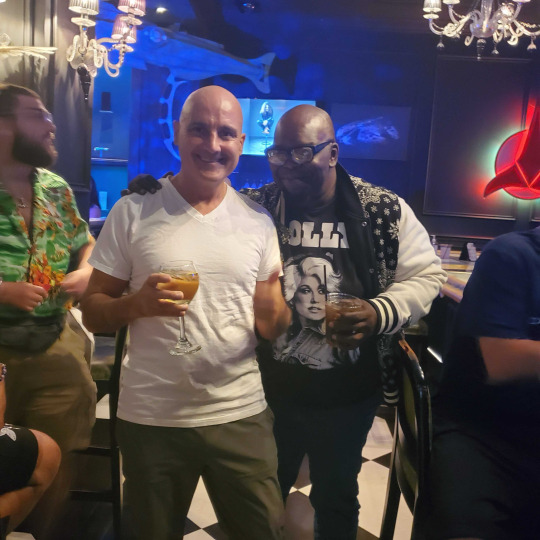
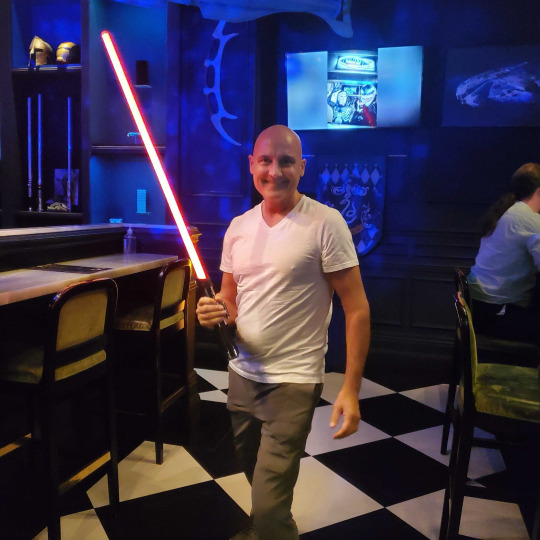
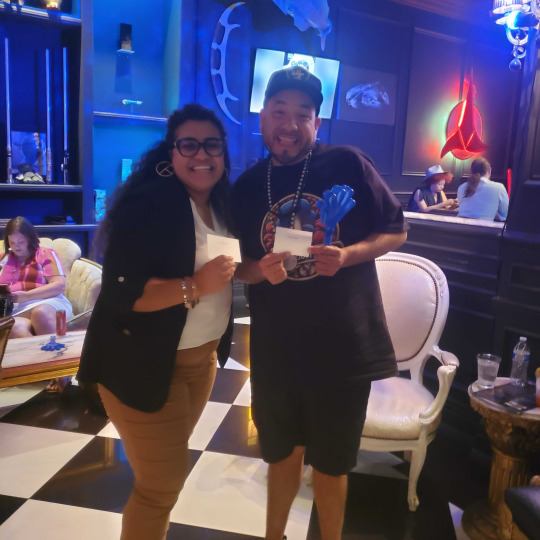
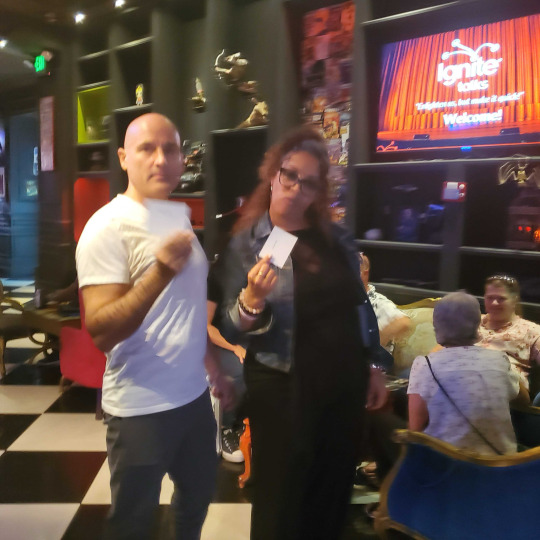
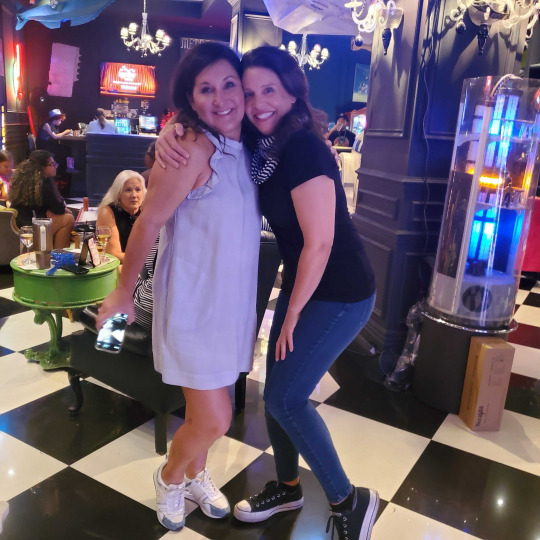
This was a free event. Please follow if you like and share for good karma 🖖
X: https://x.com/imaginician
https://roningram.me/spock
I: https://www.instagram.com/kiron.ai
P: https://www.patreon.com/RonaldIngram
W: https://kiron.ai/
L: https://www.linkedin.com/in/roningram/
S: https://ronaldingram.substack.com/
FB: https://www.facebook.com/buddhabot
Telegram: https://t.me/ronald_ingram
YouTube: https://youtube.com/@Ronald_Ingram
2 notes
·
View notes
Text
youtube
WATCH XPRIZE Launch Its Biggest Prize Ever, A Game-changer For Human Aging | XPRIZE Healthspan
I feel like I've been talking about the potential for extending human lifespan (perhaps even indefinitely?) for 20 years. And throughout that time, the topic has always been viewed as fringe-science and unserious. So, it's pretty cool to see this massive $101 Million XPrize for increasing the human "health-span".
Healthspan does differ from lifespan in that it focuses more on the health quality of life (esp in later years), compared to lifespan which focuses more on the number of years. The distinction though is often, let's say, political. For instance, for many years researchers have had difficulty getting funding and gov't approval for research into extending the human lifespan, mostly because dying of old age is considered normal and therefore there's no need to spend money to try to stop it. In contrast, healthspan argues about improving the quality of our existing years, and so is treated differently. However, most of the time it is understood that a significant increase in healthspan would correlate with an increase in lifespan.
Furthermore, when you hear how some researchers talk about biology, it's clear that the distinction becomes meaningless. After all, if biology is just "squishy mechanics", there's no reason why aging couldn't be halted or even reversed, just like how an old car can be restored, but instead of using a monkey wrench, we'll be using tools like gene editing.
Of course, that level of control over biology would require an extremely deep understanding of how we work and abilities to manipulate our biology. But with advancements in science - such as AI - we are rapidly advancing both of those goals. And with something like the XPrize which is helping to normalize and promote this kind of research, we could potentially soon unlock incredible power to control our biology.
Last point: Longevity Escape Velocity. LEV is an idea that once humanity starts to increase its lifespan, most people will live to the point that we have complete control of our lifespan. Here's why: Say the XPrize manages to add 10 years of life to us all. Now we have an extra ten years. Meanwhile, within ten years from that breakthrough, we'll likely have more advancements, further extending our lifespan, say by 20 years. And the process continues.
It's possible that we may well be the first "immortal" generation, or possibly the last one to die.
5 notes
·
View notes
Text
Unveil the Secret of Youthful Energy: the Power of NAD+
There's an energy residing within each of us, a vitality we often associate with youth. But what if we told you it's possible to rediscover and maintain that energetic drive, promoting health at the cellular level, regardless of age? The secret might lie in Nicotinamide Adenine Dinucleotide, or NAD+.
Today, we'll guide you through the discovery of EnduNAD+, an advanced dietary supplement designed to unlock the potential of this fundamental molecule.
What is NAD+ and Why is it So Crucial?
NAD+ isn't just a simple molecule; it's a vital coenzyme that plays an irreplaceable role in hundreds of metabolic processes within our cells.
Think of it as the "energy currency" of your cells: without NAD+, the processes that transform nutrients into energy – like the Krebs cycle and oxidative phosphorylation – couldn't happen efficiently. In other words, NAD+ is what allows your cells to function at their best, supporting everything from cellular respiration to DNA repair.
The problem, however, is that NAD+ levels in our body decrease significantly with age.
This decline isn't marginal: between the ages of 30 and 70, NAD+ levels can drop by up to 65%. This drop is closely correlated with many of the signs and symptoms we associate with aging, such as feelings of tiredness, decreased energy, reduced regenerative capacity, and a general slowing down of bodily functions.
EnduNAD+: The Advanced Solution for Optimal NAD+ Levels
This is where EnduNAD+ comes in. Defined as an advanced, multi-ingredient NAD+ booster, this dietary supplement is precisely formulated to help maintain adequate NAD+ levels in your body.
It's not just a simple supplement, but a complete solution designed to support your health at the cellular level, offering long-lasting energy support.
The philosophy behind EnduNAD+ is clear: provide your body with NAD+ precursors and other key ingredients that facilitate the production and maintenance of this essential cofactor. Its formula is backed by scientific research, ensuring that each capsule is a step towards greater vitality.
The Multiple Benefits of Optimal NAD+ Levels (and EnduNAD+)
The impact of adequate NAD+ levels is remarkable and manifests in several areas of your health:
Support for Cellular Energy Production: As mentioned, NAD+ is crucial for converting nutrients into usable energy. Supporting its levels means your cells can function more efficiently, reducing feelings of tiredness and fatigue, and supporting normal energy metabolism. Imagine having batteries that are always charged!
Accelerated Regeneration and Protection from Aging: NAD+ promotes DNA repair processes, supporting the activity of PARP enzymes, which are crucial for repairing damage to genetic material. This is essential for protecting cells from mutations and, ultimately, for slowing down aging processes. High NAD+ levels also stimulate sirtuins, longevity-linked proteins that regulate metabolism and combat cellular aging. Accelerated regeneration is one of the main reasons people choose EnduNAD+.
Enhanced Cognitive Functions: The mind, like the body, benefits enormously from NAD+. It has a positive impact on brain function, protecting neurons and supporting brain mitochondrial function. The result? Improved memory and concentration, and a potential reduction in the risk of neurodegenerative diseases.
Strengthened Immunity: High NAD+ levels support the immune system by promoting the production of protective proteins and bolstering immune responses. This translates to greater resistance to infections and inflammation.
Improved Metabolism and Weight Management: NAD+ plays a key role in regulating glucose and fatty acid metabolism. By supporting these processes, it improves nutrient processing, leading to better weight control and reduced fat accumulation. Say goodbye to lack of energy and welcome stronger muscles and effective weight management.
Support for Heart and Brain Health: EnduNAD+ is also formulated to support the health of vital organs like the heart and brain, offering comprehensive protection.
Why Choose EnduNAD+? Features That Make the Difference
EnduNAD+ stands out for several fundamental reasons:
Advanced, Fast-Acting Formula: Designed to maximize benefits.
Natural Ingredients: A carefully selected blend of plant extracts and essential compounds.
Vegan-Friendly: An inclusive product that respects ethical choices.
Made in Europe: Guarantee of high-quality standards.
With EnduNAD+, you're not just buying a supplement; you're investing in your long-term health and vitality. It's the perfect solution for those who want to get more out of life, increase physical and mental performance, and delay the aging process.
How to Start?
The recommended daily serving is two capsules, to be taken with 300 ml of water. It's important not to take it on an empty stomach. Initial results may be felt within just a few weeks, but for full benefits, regular use for at least 2-3 months is recommended. Since NAD+ supports long-term cellular health, supplementation can be continued for a longer period.
Don't wait, experience the difference with EnduNAD+ and discover the power residing in your cells! Start taking action today.
BUY NOW
#AntiAging#EnergyBoost#Longevity#BrainHealth#CellularEnergy#ImmunityBoost#MetabolicHealth#Neuroprotection#HealthTech#FutureOfHealth#SelfCare#EnergyGoals#CognitiveEnhancement#Healthspan
0 notes
Text
My hubby and I celebrated twenty years of marriage this June. We’ve had our ups and downs over the years, and so has my weight. In my latest blog post I’m thinking back to what it was like to be a fat bride, and looking forward with a new perspective on an old hang-up. Take a look and let me know what you think. I love comments! xoxo https://www.theflavorprofiler.com/blog/fat-bride
0 notes
Text
Dall’editing genetico al ringiovanimento cellulare: vivremo davvero 200 anni? Scopri quali sono oggi i limiti e le possibilità della longevità umana su Alessandria today.
#200 anni e scienza#Alessandria today#alimentazione e longevità#Andrew Steele Ageless#aspettativa di vita#biotecnologie anti-age#cellule senescenti#CRISPR#DNA e invecchiamento#donne più longeve#editing genetico#futuro della medicina#genetica e vita#Google News#Harvard ricerche invecchiamento#healthspan#intelligenza artificiale medicina#invecchiamento e scienza#italianewsmedia.com#Lava#longevità umana#medicina antiage#medicina del futuro#microbiota intestinale#MIT e longevità#nuove cure invecchiamento#Pier Carlo#prevenzione medica#Qualità della vita#rigenerazione dei tessuti
0 notes
Text
Healthspan vs. Lifespan: Why Women Are Living Longer—but Not Healthier
We’re living longer than ever before—but are we living better? Thanks to medical advancements and lifestyle shifts, the average lifespan has increased more than our great-grandparents ever imagined. But there’s a catch: we’re spending more of those extra years in poor health. And for women, that reality hits even harder. Lifespan vs. Healthspan: What’s the Difference? Let’s break it…

View On WordPress
0 notes
Text
Revolutionizing Healthy Aging: The Intersection of Sports Medicine and Geriatrics
As a Sports Medicine Physician and a Geriatrician, I stand at a unique intersection, gaining a transformative perspective on the future of healthy aging. This dual expertise isn't just about combining two fields; it's about unlocking a powerful synergy that places movement at the very heart of longevity.

From Elite Performance to Lifelong Vitality: The Sports Medicine Blueprint
Sports medicine has always been a frontier of human optimization. It’s relentless in its pursuit of peak performance, injury prevention, and rapid recovery for athletes. This discipline thrives on data-driven insights: every stride, every heart beat, every biomarker is meticulously measured, analyzed, and leveraged to fine-tune training and recuperation. It’s a fundamentally proactive and preventative approach.
My work in geriatrics, on the other hand, immerses me in the realities of aging: the complexities of age-related diseases, the challenges of frailty, and the essential quest to maintain autonomy and quality of life.
The synergy is undeniable: what if we applied this same rigor, this same drive for optimization and prevention, to the entire human lifespan? What if we saw movement not just as a part of life, but as a central pillar of medical intervention for aging?
The Ideal Ecosystem for Vibrant Aging: The Virtuous Model
The virtuous model for healthy aging would integrate:
✨ "Movement-First" Medicine: This isn't just about generic "exercise advice." It's about prescribing movement as medicine, tailored to individual needs and abilities. From preventing falls and maintaining muscle mass, to enhancing cardiovascular health and boosting cognitive function, movement is a potent, non-pharmacological therapy. This sits alongside cutting-edge drug therapies targeting biological aging mechanisms, recognizing their synergistic power.
🧠 AI as the Movement Optimizer: Artificial Intelligence, fueled by massive, diverse datasets (genomic, clinical, and biometric data from wearables), becomes the intelligence behind this ecosystem. AI can identify optimal movement patterns for each individual, predict the impact of different exercise regimens on healthspan, and even nudge us towards better habits. It enables truly personalized medicine, adapting physical activity recommendations to each unique profile.
🔬 Quantifying the Unseen Power of Movement: To fully integrate movement, we need to standardize and apply robust metrics for its impact. This means moving beyond simple step counts to leverage sophisticated biomarkers of aging (like epigenetic clocks), functional performance tests (cognitive and physical), and real-time insights from wearables. Quantifying the profound effects of movement is crucial for its scientific validation and clinical adoption.
Real-World Embodiment: The M42 and Juvenescence Alliance
This virtuous model is powerfully exemplified by the recent strategic partnership and significant funding round secured by Juvenescence, a longevity biotech, with M42, a tech-enabled healthcare leader. This alliance showcases a commitment to:
AI-driven drug discovery: Juvenescence's pipeline focuses on age-related diseases powered by AI.
Integrated data and infrastructure: M42 provides extensive clinical data, genomics expertise (like the Emirati Genome Program), biobanks, and broad healthcare delivery infrastructure.
Holistic healthy lifespan extension: Their shared goal is to develop therapeutics and strategies designed to "extend healthy lifespan," indicating a move beyond mere disease treatment.
Building a life-sciences hub: The collaboration on a new AI-enabled drug development hub in Abu Dhabi illustrates the commitment to an integrated ecosystem.
This partnership perfectly illustrates how a virtuous model can translate these concepts into tangible progress, combining deep scientific expertise with robust technological and data capabilities.
The Performance of Aging: You Are the Athlete of Your Life
My dual role allows me to translate the principles of "athletic performance" into "life performance." It's about reframing aging not as an inevitable decline, but as a phase where we can actively maintain, and even enhance, our vitality and independence through targeted, data-driven movement.
The goal is clear: to extend the "healthspan", not just the lifespan. This requires a proactive, measurable, and deeply personalized approach, inspired by the lessons of high-performance sports and powered by AI's ability to optimize our most fundamental tool for health: movement.
We are on the cusp of a revolution where active, healthy aging is no longer an exception, but an accessible norm for everyone. Are you ready to become the athlete of your own longevity
Go further
#HealthyAging#Longevity#SportsMedicine#Geriatrics#AI#HealthTech#Healthspan#Prevention#Movement#FutureOfMedicine
0 notes
Text
The Science Behind Telomeres and Aging
What are Telomeres? In each of our cells, DNA is organised into chromosomes with tiny protective caps at the ends called telomeres. These repetitive DNA sequences (TTAGGG in humans) buffer the chromosome ends during cell division. As cells divide, telomeres get a bit shorter—about 30–200 base pairs per division. This “end-replication problem” means telomere length gradually declines over time. In fact, newborn blood cells typically have ~8,000 base pairs of telomeric DNA, dropping to around 3,000 by middle age and as low as 1,500 in the elderly. Eventually, critically short telomeres can no longer protect chromosomes, triggering cell senescence or death.
Telomeres thus act like a cellular “clock” for ageing. Each cell type in our body can only divide so many times (the Hayflick limit of roughly 50–70 divisions) before telomeres become critically short. When that happens, cells stop dividing or die – a protective mechanism that helps prevent cancerous overgrowth. In this way telomere shortening is a hallmark of ageing at the molecular level. Cells with longer telomeres tend to divide healthily for longer, whereas those with very short telomeres often show signs of ageing. Research shows leukocyte (white blood cell) telomere length predictably shortens by ~20–40 base pairs per year of life, reflecting cumulative wear and tear.

Telomeres cap each chromosome end. Over time they shorten as cells divide, eventually leading to cellular ageing and senescence.
Telomeres and the Aging Process
As telomeres shorten, cellular health declines. Once telomeres reach a critically short length, cells enter senescence or apoptosis, stopping further division. This contributes directly to ageing: tissues with many non-dividing cells (like heart muscle) age more slowly, while those that renew often (like skin or blood) show the effects of telomere shortening sooner. Importantly, critically short telomeres also signal DNA damage. The cell’s protective machinery (e.g. p53) detects uncapped chromosome ends and shuts down division. In practice, this means short telomeres link to many age-related diseases. For example, studies find associations between shortened telomeres and higher risks of Alzheimer's disease, atherosclerosis, high blood pressure, type II diabetes and certain cancers. In other words, telomere attrition is not just a molecular curiosity – it underpins the health decline we see as we age.
This science has real-world implications. Australians already enjoy one of the world’s longest lifespans, but there’s a gap between lifespan and healthspan – the years lived in good health. In fact, on average there’s about a 10-year difference between how long Australians live and how well they live. Telomeres help explain part of this story: by understanding and measuring telomere health, we get insights into biological ageing beyond just the calendar. A lifestyle that preserves telomere length can therefore help close that gap, keeping people healthier in later years.
Lifestyle and Telomere Health
Telomere length is influenced by both genetics and lifestyle. Some people inherit naturally longer telomeres, but the environment plays a big role too. Studies show that chronic stress, poor diet and sedentary living accelerate telomere shortening, while healthy habits tend to protect them. For instance, chronic psychological stress has been linked to significantly shorter telomeres – roughly equivalent to years of additional cellular ageing. Conversely, moderate regular exercise is associated with longer telomeres in blood cells, indicating slower ageing. Adequate sleep, a balanced diet rich in antioxidants, and good stress management have all been linked (in multiple studies) to slower telomere erosion.
In practice, this means day-to-day choices matter. A lifestyle rich in leafy greens, lean protein and healthy fats provides nutrients that help protect DNA, including telomeric DNA. Regular activity (even brisk walking or cycling) has been shown to correlate with longer telomeres, likely by reducing inflammation and oxidative stress. Likewise, mental health matters: evidence indicates chronic stress shortens telomeres and raises disease risk. Mindfulness, therapy and social support can help buffer stress hormones and may indirectly preserve telomeres. In short, everything from smoking to prolonged work stress can shave years off your cellular age, whereas wholesome living can slow that clock.
Protecting and Enhancing Telomeres
Understanding telomeres has opened the door to proactive health strategies. At leading longevity clinics like LivLife Medical Noosa, telomere health is part of a comprehensive picture. Clients often begin with advanced testing: bloodwork to measure telomere length in immune cells, along with genomic and metabolic profiling. These tests are part of a comprehensive medical assessment that evaluates risk factors for accelerated ageing. By combining telomere data with other biomarkers (like cholesterol, blood sugar, blood pressure, and even gut microbiome profiles), clinicians can form a personalised “age management” plan. This is true preventive healthcare, aiming to add life to years, not just years to life.

What does this look like in practice? If your telomeres are shorter than average for your age, a doctor might recommend targeted interventions. This could include nutritional supplements (e.g. Omega-3s, vitamin D, or specific antioxidants) that have been studied for telomere support. It might also involve prescription exercise regimens, sleep hygiene plans or stress-reduction therapies. Some anti-aging programmes even monitor telomerase – the enzyme that can rebuild telomeres – through specific lifestyle interventions like moderate caloric restriction or certain plant compounds (though this research is ongoing). The key is that every strategy is personalised: what works for one person’s telomeres may differ for another’s, which is why experts emphasise data-driven plans.
Cells splitting under a microscope. Telomeres shorten with each division, so healthy cell renewal relies on good telomere maintenance. Lifestyle choices (diet, exercise, stress) influence this process.
LivLife Medical’s Longevity Approach
Telomere science perfectly aligns with LivLife Medical Noosa’s ethos. As a destination longevity clinic, LivLife combines cutting-edge diagnostics with luxury wellness. Clients from around Australia (and beyond) choose this Sunshine Coast anti-aging clinic for its world-class facilities and preventative focus. Early in the process, each guest receives a comprehensive medical assessment – think full blood panels, genetic screening, VO2 max testing and gut microbiome analysis – to map out their biological age versus chronological age. This aligns with a commitment to world-class preventive healthcare: using data (like telomere length) to head off problems before they start.
Crucially, LivLife’s team provides expert lifestyle medicine at every turn. Dietitians craft personalised anti-inflammatory nutrition plans, psychologists guide stress management, and exercise physiologists develop bespoke fitness regimens. Because telomere health spans mind and body, LivLife’s approach is holistic. For example, if telomere tests indicate accelerated ageing, their plans might include a Mediterranean diet rich in berries and nuts, plus targeted supplements, along with a fitness routine proven to boost cellular health. Patients also learn lifelong habits – sleep routines, mindfulness practices, and even skin therapies (since skin health is part of total wellness) – all designed to keep telomeres as long and active as possible. In short, LivLife Medical doesn’t just report your telomere score; it helps you act on it. By focusing on prevention, personalised care and ongoing support, their longevity programmes help clients turn back the cellular clock. With telomeres as a guide, patients are empowered to add vitality and health to every year they live, fulfilling LivLife’s mission to add life to your years.
0 notes
Text
Can Science Make You Faster Than Usain Bolt? | Human Enhancement & Longevity Explained
youtube
Can Science Make You Faster Than Usain Bolt? | Human Enhancement & Longevity Explained #humanenhancement #enhancedgames #antiaging
What if a 65-year-old could run faster than Usain Bolt? Sounds impossible, right? Please visit my website to get more information: http://beyondtomorrowpodcast.com/
Can Science Make You Faster Than Usain Bolt? | Human Enhancement & Longevity Explained #humanenhancement #enhancedgames #antiaging
What if a 65-year-old could run faster than Usain Bolt? Sounds impossible, right? Please visit my website to get more information: http://beyondtomorrowpodcast.com/
🔔 Subscribe for more bold ideas about the future.
🔔𝐃𝐨𝐧'𝐭 𝐟𝐨𝐫𝐠𝐞𝐭 𝐭𝐨 𝐬𝐮𝐛𝐬𝐜𝐫𝐢𝐛𝐞 𝐭𝐨 𝐦𝐲 𝐜𝐡𝐚𝐧𝐧𝐞𝐥 𝐟𝐨𝐫 𝐦𝐨𝐫𝐞 𝐮𝐩𝐝𝐚𝐭𝐞𝐬. / @thebeyondtomorrowpodcast
⭐⭐⭐Audio Music is currently on your favorite platforms:
Spotify:https://open.spotify.com/show/27apysJ...
AppleMusic:https://podcasts.apple.com/gb/podcast...
🔗 Stay Connected With Me.
Instagram: / thebeyondtomorrowpodcast
TikTok: / thebeyondtomorrowpodcast
Linkedin: / the-beyond-tomorrow-podcast
Website: http://beyondtomorrowpodcast.com/
=============================
#humanenhancement#enhancedgames#antiaging#longevity#biohacking#futureofsport#usainbolt#performanceenhancement#healthspan#transhumanism#redefiningaging#peptides#cybernetics#enhancementtechnology#nextgenathletes#Youtube
1 note
·
View note
Text
youtube
#BiologicalAge#HealthInnovation#AgingScience#Longevity#PersonalizedHealth#MedicalBreakthrough#AntiAging#Wellness#HealthyAging#BloodTest#MedicalResearch#PreventiveCare#Healthcare#AgeAssessment#SteroidBiomarkers#PrecisionMedicine#LifeSpan#HealthSpan#Genetics#AgeRelatedDiseases#BloodBiomarkers#HealthTechnology#SmartHealthcare#AgingWell#HealthMonitoring#MedicalAdvancement#WellnessTechnology#HealthyLiving#FutureOfMedicine#Biomarkers
0 notes
Text
Hacking wealth and health systems.
I’m getting ready to launch my first coin. Names, logo, white paper ready. I’ll put up a website link today. I’ve started a YouTube channel but I only have 18 subscribers and 716 followers on X, nothing much on Reddit or Telegram or Discord yet either. Is this enough to get a new coin going? I’ll soon find out.
I plan to do everything right, be fully transparent and have a very good reputation working in my favor. Should I wait or just launch it now?
Any success stories with coins made that anyone can point me too? I want my coin to make all participants prosperous short and long term (healthy and wealthy). There are two main systems I have been actively tackling with some success:
1. the epigenetic code to lifespan; and,
2. the global banking system.
…nothing major, right 👀 but I can do it 💫 siriusly 💫 if I can build even a small community.
Free advice welcome 🖖 find my stuff at Kiron.ai and Ronald Ingram on YT and I’ll post here too.
see min (5:40) on my YT for #jedi trick and story about real life search and discovery of the “force”: youtu.be/H_HPQx7aB9Q?si… Go to & Subscribe on YT for free #crypto now. I may retract this offer at any time. 🖖
youtube
#biohacking#opportunity#epigenetics#longevity#innovation#health#healthspan#fintech#neobank#star wars#jedi#star trek#Youtube
2 notes
·
View notes
Text
Healthspan - Wege zu einer längeren Lebensspanne in Gesundheit. Fünfter Teil - Präventive Medizin

Healthspan - Wege zu einer längeren Lebensspanne in Gesundheit. Fünfter Teil - Präventive Medizin
15. Präventive Medizin
Regelmäßige Vorsorgeuntersuchungen helfen, altersbedingte Krankheiten frühzeitig zu erkennen und zu behandeln Regelmäßige Vorsorgeuntersuchungen spielen eine zentrale Rolle im Bereich Anti-Aging, da sie helfen, den Gesundheitszustand zu überwachen, frühzeitig Anzeichen von altersbedingten Erkrankungen zu erkennen und Maßnahmen zu ergreifen, um die Gesundheit zu erhalten und das Altern zu verlangsamen. Diese Untersuchungen konzentrieren sich auf präventive Maßnahmen, die die Lebensqualität steigern und altersbedingte Risiken minimieren. Hier sind einige der wichtigsten Vorsorgeuntersuchungen und -maßnahmen im Kontext von Anti-Aging: 1. Allgemeine Gesundheitsuntersuchungen - Blutdruckmessung: Hoher Blutdruck kann zu Herz-Kreislauf-Erkrankungen führen, die mit dem Alter zunehmen. Eine regelmäßige Kontrolle hilft, das Risiko für Herzinfarkt und Schlaganfall frühzeitig zu erkennen und zu behandeln. - Blutuntersuchungen: Regelmäßige Blutuntersuchungen bieten Informationen über wichtige Blutwerte, wie Cholesterin, Blutzucker, Nieren- und Leberfunktionen. Diese Werte sind wichtige Indikatoren für das Risiko von Diabetes, Herz-Kreislauf-Erkrankungen und anderen altersbedingten Krankheiten. - Blutfettwerte (Cholesterin, Triglyceride): Hohe Cholesterinwerte sind mit einem erhöhten Risiko für Herzkrankheiten verbunden. - Blutzucker (Insulinresistenz, HbA1c): Die Überwachung des Blutzuckers hilft, Diabetes frühzeitig zu erkennen und zu behandeln. - Entzündungsmarker: Entzündungen sind ein wichtiger Faktor im Alterungsprozess (Inflammaging). CRP (C-reaktives Protein) und andere Entzündungsmarker können Hinweise auf chronische Entzündungen geben. 2. Krebsfrüherkennung - Mammographie (Brustkrebs): Für Frauen ab einem bestimmten Alter (je nach Land und individueller Risikofaktoren) wird eine regelmäßige Mammographie empfohlen, um Brustkrebs frühzeitig zu erkennen. - Pap-Abstrich und HPV-Test (Gebärmutterhalskrebs): Frauen sollten regelmäßig Pap-Abstriche durchführen lassen, um Gebärmutterhalskrebs vorzubeugen und frühzeitig zu erkennen. - Darmkrebs-Screening (Kolonoskopie): Ab dem 50. Lebensjahr wird häufig empfohlen, alle 10 Jahre eine Koloskopie zur Früherkennung von Darmkrebs durchzuführen. - Prostatakrebs-Screening: Männer sollten ab dem 50. Lebensjahr (oder früher, wenn familiäre Vorbelastung vorliegt) eine jährliche Prostatauntersuchung in Betracht ziehen. Der PSA-Test kann dabei helfen, Prostatakrebs frühzeitig zu erkennen. 3. Herz-Kreislauf-Untersuchungen - EKG (Elektrokardiogramm): Ein EKG hilft, Herzrhythmusstörungen zu erkennen und zu überwachen. Es ist besonders wichtig für die Früherkennung von Herzinfarkten oder anderen kardiovaskulären Erkrankungen. - Ultraschall der Halsschlagader: Diese Untersuchung prüft auf Plaqueablagerungen in den Arterien, die zu einer Arteriosklerose und damit zu einem erhöhten Risiko für Schlaganfälle führen können. - Herz-Kreislauf-Risiko-Analyse: Bei dieser Untersuchung werden Risikofaktoren wie Blutdruck, Cholesterinwerte und Blutzucker berücksichtigt, um das individuelle Risiko für Herz-Kreislauf-Erkrankungen zu ermitteln. MONOAMIN-OXIDASEN, OXIDATIVER STRESS UND VERÄNDERTE MITOCHONDRIALE DYNAMIK BEI DER HERZALTERUNG MAO-A SIPS (STRESS-INDUCED PREMATURE SENESCENCE) Mitochondrien sind in dem Seneszenz-Prozess verwickelt, hauptsächlich, weil sie sowohl Quellen als auch Ziele von reaktiven Sauerstoffspezies (ROS) sind. Stressbedingte vorzeitige Seneszenz in Herzzellen durch erhöhte MAO A führt zu mitochondrialen Schäden, Kardiomyozytentod und Herzinsuffizienz und steuert in Herzzellen zur ROS-Produktion, mitochondriale Dysfunktion und zur Mitophagie-Hemmung bei. Zusätzlich beeinträchtigt MAO A-erzeugter oxidativer Stress die Lysosomenfunktion, was zu einer Blockade des autophagischen Flusses führt. Als Beispiel ist das mitochondriale Enzym Monoamin-Oxidase-A (MAO A) zu erwähnen, welches im Herzen durch die Bildung von Wasserstoffperoxid (H2O2), das aus dem Abbau (oxidativer Desaminierung) seiner Hauptsubstrate Noradrenalin und Serotonin stammt, eine relevante Quelle für reaktive Sauerstoffspezies (ROS) darstellt und zur zellulären Seneszenz am Herzen führt.
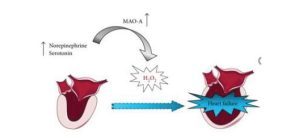
ABB. ROLLE VON MAO-A BEI HERZINSUFFIZIENZ Quelle: Gomes, Aldrin V. Magg iorani, Damien et al. Monoamine Oxidases, Oxidative Stress, and Altered Mitochondrial Dynamics in Cardiac Ageing. 2017.Oxidative Medicine and Cellular Longevity.

100 % bioactive
SAM-e
S-ADENOSYLMETHIONINE
als (S/S) Spiegelisomer
singulärer DNA-und Histon-Methylgruppen-Donator
https://nugenis.eu/shop/
4. Hormonelle Gesundheit und Endokrine Systemuntersuchungen - Testosteronspiegel (bei Männern) und Östrogenspiegel (bei Frauen): Die regelmäßige Überprüfung der Hormonwerte ist wichtig, da Hormonungleichgewichte das allgemeine Wohlbefinden und das Altern beeinflussen können. Besonders bei Männern im mittleren und höheren Alter kann ein Testosteronmangel die Lebensqualität negativ beeinflussen. - Schilddrüsenuntersuchung: Schilddrüsenprobleme wie Hypothyreose (Unterfunktion) oder Hyperthyreose (Überfunktion) können das Altern beschleunigen. Die regelmäßige Überprüfung der Schilddrüsenwerte (z.B. TSH, T3, T4) ist deshalb wichtig. 5. Knochengesundheit - Knochendichte-Messung (Osteoporose-Screening): Ab dem 50. Lebensjahr, besonders bei Frauen nach der Menopause, ist es wichtig, die Knochendichte regelmäßig zu messen. Eine verminderte Knochendichte erhöht das Risiko für Frakturen und Osteoporose. - Vitamin D-Spiegel: Ein Vitamin D-Mangel kann sich negativ auf die Knochengesundheit auswirken und zu einer erhöhten Knochenbrüchigkeit führen. Regelmäßige Messungen können helfen, Mängel frühzeitig zu erkennen. 6. Augen- und Höruntersuchungen - Augenuntersuchungen: Regelmäßige Augenuntersuchungen sind wichtig, um Alterskrankheiten wie Makuladegeneration oder grauen Star frühzeitig zu erkennen. Auch Diabetische Retinopathie bei Diabetikern ist ein häufiger Altersfaktor. - Hörtests: Ab dem 50. Lebensjahr oder bei Anzeichen von Hörverlust sollte regelmäßig ein Audiogramm durchgeführt werden, um Hörprobleme frühzeitig zu diagnostizieren. ALTERSBEDINGTER MAKULADEGENERATION (AMD) Die altersbedingte Makuladegeneration (AMD) ist eine der häufigsten Ursachen für Sehbehinderungen und Erblindung bei älteren Menschen, besonders in Industrieländern. Ihre Häufigkeit steigt mit dem Alter, und sie betrifft zunehmend die älteren Generationen. Hier sind einige wichtige Fakten zur Häufigkeit von AMD: - Prävalenz: - Etwa 8 bis 10% der Menschen über 60 Jahren weltweit leiden an einer Form der AMD. - In Deutschland sind es schätzungsweise etwa 1,5 Millionen Menschen, die an AMD erkrankt sind. In anderen westlichen Ländern sind ähnliche Zahlen zu beobachten. - Altersgruppen: - Die Häufigkeit der AMD nimmt mit dem Alter signifikant zu. Bei Menschen im Alter von 50 bis 60 Jahren ist die Erkrankung noch relativ selten, aber ab etwa 70 Jahren steigt das Risiko erheblich. - Rund 30% der Menschen im Alter von 75 Jahren oder älter haben eine Form der AMD An der Pathogenese der altersbedingten Makuladegeneration ist die DNAHypomethylierung beteiligt. Die altersbedingte Makuladegeneration (AMD) ist die häufigste Ursache für eine irreversible Blindheit bei Menschen ab 50 Jahren und kann nicht wirksam geheilt werden. Die Krankheit ist gekennzeichnet durch die fokale Ablagerung von azellulären und polymorphen Trümmern, Drusen genannt,zwischen retinalem Pigmentepithel (RPE) und Bruch-Membran. Eines der in Drusen akkumulierten Hauptproteine ist Clusterin, dessen Expression durch Promotor-Methylierung reguliert wird. Auch gibt es zahlreiche Hinweise, dass die durch oxidativen Stress aus der Atmungskette der Mitochondrien verursachten Störungen eine weitaus größere Bedeutung bei der Entstehung der AMD haben als bislang angenommen. Gerade der oxidative Stress (ROS) führt bei AMD-Patienten zu gravierenden DNA-Schäden der mitochondrialen DNA. Sowohl Alter und Rauchen sind bestätigte Risikofaktorenfür AMD.

100 % bioactive
SAM-e
S-ADENOSYLMETHIONINE
als (S/S) Spiegelisomer
singulärer DNA-und Histon-Methylgruppen-Donator
https://nugenis.eu/shop/
7. Zahngesundheit - Regelmäßige Zahnuntersuchungen: Zahngesundheit hat direkten Einfluss auf das allgemeine Wohlbefinden und den Alterungsprozess. Regelmäßige Zahnarztbesuche helfen, Zahnerkrankungen (wie Parodontitis oder Karies) zu vermeiden, die zu entzündlichen Erkrankungen führen können und somit den gesamten Körper belasten. 8. Mental Health Check-up - Psychische Gesundheit: Besonders im Alter können psychische Erkrankungen wie Depression, Angststörungen oder Kognitive Beeinträchtigungen auftreten. Regelmäßige Screenings für psychische Gesundheit sind wichtig, um frühzeitig gegen Alzheimer oder andere demenzielle Erkrankungen vorzugehen und die Lebensqualität zu erhalten. 9. Genetische Untersuchungen - Genetische Prädispositionen: Einige Menschen haben aufgrund ihrer genetischen Veranlagung ein höheres Risiko, an bestimmten Krankheiten zu erkranken (z. B. Herz-Kreislauf-Erkrankungen, Krebs). Mit genetischen Tests können Risikofaktoren identifiziert werden, die präventive Maßnahmen erleichtern. Diese Tests suchen nach Genveränderungen, die das Risiko erhöhen können, bestimmte Krankheiten in der Zukunft zu entwickeln, wie z. B. bestimmte Arten von Krebs (z. B. Brust- oder Darmkrebs) oder neurodegenerative Erkrankungen wie die Huntington-Krankheit. Ein bekanntes Beispiel ist der BRCA1- oder BRCA2-Test, der auf ein erhöhtes Risiko für Brust- und Eierstockkrebs hinweist. Prävention ist der Schlüssel Anti-Aging geht weit über kosmetische Eingriffe hinaus. Es umfasst vor allem präventive Maßnahmen, die darauf abzielen, den Körper zu erhalten, bevor Symptome von Alterserkrankungen auftreten. Regelmäßige Vorsorgeuntersuchungen sind eine wichtige Grundlage, um den Gesundheitszustand zu überwachen und altersbedingte Risiken frühzeitig zu erkennen. Diese Untersuchungen ermöglichen es, Verhaltensweisen zu ändern, Behandlungen zu starten und so die gesunde Lebensspanne (Healthspan) zu maximieren und das biologische Altern zu verlangsamen.
16. Sind wir durch Vorsorgeuntersuchungen wirklich gesund?
Die asymptomatische Neurodegeneration
MITOCHONDRIALE THEORIE VON ALTERN UND NEURODEGENERATION (Harman 1972) Die mitochondriale Theorie von Altern und Neurodegeneration von Denham Harman postuliert einen molekularen Teufelskreis, in dem sich oxidativer Stress und Schäden an mitochondrialen Proteinen und mitochondrialer DNA (mtDNA) gegenseitig verstärken. Die Folge ist eine mitochondriale Funktionsstörung und eine verminderte Expression von mitochondrial kodierten Atmungskettenuntereinheiten. Dies bewirkt eine Störung des Elektronenflusses in der Atmungskette und führt aus diesem Grund zu einer vermehrten reaktive Sauerstoffspezies (ROS)-Produktion. Bei Überschreiten eines bestimmten Schädigungsschwellenwertes (ca. 60- 85% aller mtDNA-Moleküle einer Zelle) kommt es zu einer Funktionsstörung der Mitochondrien und letztendlich zum Untergang der betroffenen Zellen, was sich nach außen als „normales Altern“, (auf Zellebene als „physiologischer“ Alterungsprozess, aber auch als noch asymptomatische Neurodegeneration) oder aber als „neurodegenerative Erkrankung“ mit manifesten Symptomen äußert. Postmitotische Gewebe mit hohem Energiebedarf, wie Gehirn, Leber, Retina und Skelettmuskel/Herzmuskel, Nieren und Hoden sind besonders vondiesem Teufelskreis betroffen, da sie einen hohen Sauerstoff-Umsatz haben und geschädigte Zellen nicht in relevantem Umfang erneuert werden können. Ohne rechtzeitiger Prävention zum Schutz der Mitochondrien (oxidativer Stress durch den Anstieg der ROS-Produkte und Schäden an mitochondrialen Proteinen und mitochondrialer DNA (mtDNA) durch eine S-Adenosylmethionine-Supplementation, sind bei klinischer Diagnose der z.B. Alzheimer-Krankheit die neurodegenerativen Schäden bereits soweit fortgeschritten, dass nur symptomatische und palliative Therapien zur Patientenversorgung offen stehen. Sobald klinisch manifeste neurodegenerative Schäden auftreten, ist der Handlungsspielraum stark eingeschränkt. Der Schutz der Mitochondrien und die Reduktion oxidativen Stresses in frühen Stadien (oder sogar präventiv) sind daher Schlüsselstrategien, um den Verlauf von Krankheiten wie Alzheimer zu verzögern oder zu verhindern.
S-Adenosylmethionine
(SAMe, Ademetionin):
SAMe ist ein wichtiger Methylgruppendonator, der für viele zelluläre Prozesse essenziell ist, einschließlich der DNA-Methylierung und des Schutzes vor oxidativem Stress Es wird davon ausgegangen, dass eine Ergänzung von SAMe die mitochondrialen Funktionen unterstützt, indem es die Expression der Monoamin-Oxidase an seinem Genort stilllegt und damit antioxidativ wirkt, indem es den ROS-Produkte-Anstieg aus der Desaminierung der monoaminergen Neurotransmitter (Serotonin, Dopamin, Noradrenalin) durch die erhöhte Monoamin-Oxidase (MAO) verhindert. Die Vulnerabilität des Mitochondriums ist durch die Nähe der äußeren und inneren Mitochondrienmembran gegeben. Der Abstand zwischen der äußeren (Sitz der MAO-Enzyme) und innerer Mitochondrienmembran (Energiestoffwechsel der Mitochondrien, insbesondere die oxidative Phosphorylierung oder Atmungkette genannt) beträgt etwa 10–20 Nanometer (nm). Ein Nanometer (nm) entspricht einem Milliardstel Meter.

100 % bioactive
SAM-e
S-ADENOSYLMETHIONINE
als (S/S) Spiegelisomer
singulärer DNA-und Histon-Methylgruppen-Donator
https://nugenis.eu/shop/
17. Impfungen und Präventionsmaßnahmen verringern das Risiko von Infektionen, die den Alterungsprozess beschleunigen können
Impfungen und präventive Maßnahmen spielen eine wichtige Rolle im Anti-Aging, indem sie das Risiko von Infektionen verringern, die den Alterungsprozess negativ beeinflussen können. Gerade im Alter wird das Immunsystem schwächer, wodurch ältere Menschen anfälliger für Infektionen sind, die chronische Entzündungen und andere Gesundheitsprobleme fördern können. Solche Entzündungen sind ein bekannter Risikofaktor für den beschleunigten Alterungsprozess – auch als Inflammaging bezeichnet. Hier sind einige der wesentlichen Impfungen und Präventionsmaßnahmen, die helfen können, den Alterungsprozess zu verlangsamen und die Gesundheit zu fördern: 1. Impfungen als Schutz vor Infektionen - Grippeimpfung: Die saisonale Grippeimpfung ist besonders für ältere Menschen wichtig, da sie anfälliger für Komplikationen durch Influenza sind, die das Immunsystem stark belasten können. Grippeinfektionen können bei älteren Menschen zu schweren Erkrankungen oder sogar Tod führen, insbesondere wenn sie mit anderen chronischen Erkrankungen wie Herzkrankheiten oder Diabetes kombiniert sind. - Pneumokokken-Impfung: Pneumokokken sind Bakterien, die Lungenentzündungen und andere schwere Infektionen verursachen können. Besonders ältere Erwachsene sind anfällig für Pneumokokkeninfektionen, die den Alterungsprozess beschleunigen können, da chronische Entzündungen und Organschäden entstehen. Die Pneumokokkenimpfung hilft, diese Infektionen zu verhindern. - Herpes Zoster (Gürtelrose): Der Herpes Zoster (Gürtelrose) wird durch das gleiche Virus verursacht, das auch Windpocken hervorruft. Nach einer Windpockenerkrankung verbleibt das Virus im Körper und kann später im Leben reaktiviert werden. Ältere Menschen haben ein höheres Risiko, an Gürtelrose zu erkranken, was mit starken Schmerzen und möglichen langfristigen Komplikationen (z.B. postherpetische Neuralgie) verbunden sein kann. Die Impfung kann das Risiko einer Gürtelrose deutlich senken und somit das Risiko chronischer Entzündungen reduzieren. - Tetanus-, Diphtherie- und Pertussis-Impfungen: Diese Impfungen sind Teil des Standardimpfplans, können aber auch im höheren Alter notwendig sein, insbesondere bei Verletzungen oder Kontakt mit potenziellen Erregern. Infektionen wie Tetanus können das Immunsystem stark belasten und langfristige gesundheitliche Probleme verursachen. - Hepatitis-Impfungen: Die Hepatitis-B-Impfung ist besonders wichtig für Menschen im mittleren und höheren Alter, um vor einer chronischen Lebererkrankung zu schützen. Chronische Lebererkrankungen können den Alterungsprozess beschleunigen und das Risiko für Leberkrebs erhöhen. 2. Präventionsmaßnahmen zur Verringerung des Infektionsrisikos Neben Impfungen gibt es weitere wichtige Präventionsstrategien, die das Risiko von Infektionen reduzieren und somit den Alterungsprozess unterstützen: - Hygienemaßnahmen: Regelmäßiges Händewaschen und das Vermeiden von engen Kontakt mit kranken Menschen sind grundlegende Maßnahmen, um Infektionen zu verhindern. Dies ist besonders wichtig für ältere Menschen, da ihre Immunabwehr nicht mehr so effizient ist wie bei jüngeren Menschen. - Ernährung: Eine ausgewogene, nährstoffreiche Ernährung stärkt das Immunsystem und trägt dazu bei, Infektionen abzuwehren. Bestimmte Nahrungsmittel wie Obst, Gemüse, Ballaststoffe, Vitamine (insbesondere Vitamin C und D) und Mineralien (wie Zink und Eisen) haben immunstärkende Eigenschaften und unterstützen das Immunsystem. Eine gesunde Darmflora, die durch Präbiotika und Probiotika gefördert werden kann, ist ebenfalls wichtig für die allgemeine Immunfunktion. - Bewegung: Regelmäßige körperliche Aktivität stärkt das Immunsystem und hilft, das Risiko von Krankheiten zu verringern. Moderate Bewegung, wie z. B. Spaziergänge, Schwimmen oder Radfahren, hat entzündungshemmende Effekte und fördert die allgemeine Gesundheit, was wiederum den Alterungsprozess verlangsamt. - Stressmanagement: Chronischer Stress hat nachweislich negative Auswirkungen auf das Immunsystem und kann zu einer höheren Anfälligkeit für Infektionen führen. Langfristiger Stress fördert auch chronische Entzündungen, die den Alterungsprozess beschleunigen. Daher sind Maßnahmen wie Meditation, Atemübungen, Yoga oder regelmäßige Entspannungsphasen wichtig, um das Immunsystem zu stärken und den Alterungsprozess zu verlangsamen. Read the full article
#10%SAM-e-JONundentfaltetmaximalebiologischeWirkung.#altersbedingteKrankheiten#altersbedingteMakuladegeneration(AMD)#Anti-AgingStrategien#chronischeEntzündungen#Darm-Hirn-Achse#Entzündungsregulation#EthikinderAnti-Aging-Forschung#genetischePrädisposition#Gesundheitsvorsorge#Healthspan#ImpfungenundAnti-Aging#Inflammaging#MAO-ASIPS(STRESS-INDUCEDPREMATURESENESCENCE)#Mikrobiom-Optimierung#MitochondrialeGesundheit#PräventiveMedizin#S-Adenosylmethionine(SAMe)#VorbeugenistbesseralsHeilen#Vorsorgeuntersuchungen#Zellalterungverlangsamen
0 notes
Text
Elevate Your Health with Vitalis: Learn from Health Care Physicians Today
At Vitalis Healthspan, we believe that taking control of your health starts with the right knowledge. That’s why we’ve developed an online curriculum designed by experienced health care physicians. Our program empowers you to maximize your healthspan, enhance functionality, and adopt proven practices for longevity—all in a way that fits seamlessly into your life.

What Makes Vitalis Healthspan Unique?
Our curriculum draws on the expertise of health care physicians who specialize in preventive care, healthy aging, and overall wellness. We focus on providing practical knowledge that helps you:
Live Healthier, Longer
Discover how small, daily habits can add years to your life.

Enhance Your Vitality
Get expert advice on maintaining strength, energy, and mental clarity as you age.

Prevent Chronic Illness
Learn strategies from health care physicians to reduce your risk of common diseases like diabetes and heart disease.

What You’ll Learn
The Vitalis curriculum provides a well-rounded education in health and longevity, including:
Nutrition for Wellness: Learn how to nourish your body for lasting health.

Fitness for Longevity: Explore effective exercises to keep you strong and active.

Stress and Resilience: Master techniques to reduce stress and promote mental well-being.

Disease Prevention: Gain insights from health care physicians on avoiding chronic conditions.

The Science of Aging: Understand proven methods to support longevity and vitality.

Why Choose Vitalis Healthspan?
Expert Guidance
Our content is created and reviewed by experienced health care physicians, ensuring that you receive evidence-based, practical knowledge.

Convenient Online Access
Study on your own schedule, whether you have 10 minutes a day or want to dive deeper into a topic.
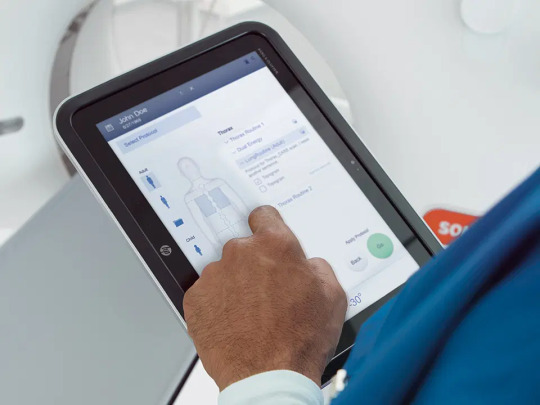
Start Elevating Your Health Today
With Vitalis Healthspan, you’ll gain the confidence and knowledge to make informed decisions about your health. Guided by the expertise of health care physicians, our curriculum is your gateway to a healthier, more vibrant life.

Enroll Today and experience the difference that Vitalis Healthspan can make in your journey toward better health. Visit our website www.vitalishealthspan.com
Your future self will thank you!
#healthandwellness#healthcarephysicians#healthiswealth#healthspan#longevity#enrollnow#visitourwebsite#vitalishealthspan#usa
0 notes
Video
youtube
Our travel to Lamut, Ifugao brings us immense joy as we share Miira Cell Plus - Plant Based Stem Cell Therapy. We pray that by sharing Miira Cell Plus, we can help improve the lives of many, especially for those experiencing various health challenges.
Green Apple Stem Cell Therapy has several health benefits. It protects skin cells from damaging UV rays and promotes the formation of new healthy skin cells to prevent age-related skin degradation². The therapy also repairs damaged tissues and organs, activates your skin stem cell regeneration, and combats chronological and genetic aging and deep wrinkles. The benefits are accumulative, meaning the longer you use it, the better the results will be. It also increases skin's cell vitality and longevity.
We are looking for partners in the area who can help us share Miira Cell Plus. Please Contact: Ednalyn P. Balino - +63 945 570 8711
Like, Follow, and Share Us on our Social Media:
https://www.facebook.com/Ednalyn1919 https://www.instagram.com/greenstemcelltherapy/ https://www.tiktok.com/@greenapplestemcell https://www.tumblr.com/blog/greencelltherapy https://www.pinterest.ph/rossano777/ https://www.tumblr.com/blog/greencelltherapy Read Our Blog and Be Inspired: https://greencelltherapy.blogspot.com/ https://npjbusiness.blogspot.com/ https://rossanosalvosaalmonia.blogspot.com/ https://greatideasinfinitepossibilities.blogspot.com/ https://greencelltherapy.tumblr.com/
#youtube#stemcelltherapy#stemcellresearch#aging#healthspan#lifespan#cagayan#isabela#vizcaya#cordillera#nuevaecija#ifugao
0 notes
Text
0 notes
Text
FACE Exercise
FACE: F- flexibility A-aerobic exercise C- carrying a load E-equilibrium.
1. Flexibility & Dynamic stretching: Warming up every single day, jumping jacks, Static stretching after workout: (yoga, pilates) F-flexibility: Focused dynamic stretching of every major muscle group daily. Hold each stretch for a full 30 seconds and repeat 4 times to stretch muscles and tendons out to their optimal performance length.
2. Arobic A-aerobic exercise: Challenge your heart and lungs intensely every other day. Mix up your training methods to prevent overuse injury.
3. C - carry a load C-carry a load: Resistance training through a functional range of motion is a must for the master. 3-5 times a week. Use your own body weight or bands if iron doesn’t appeal to you.
4. E-equilibrium. E-equilibrium: Our balance deteriorates rapidly with age but with a little daily work, you can retrain your body to keep you upright on the roads or trails with a little daily work.
1 note
·
View note